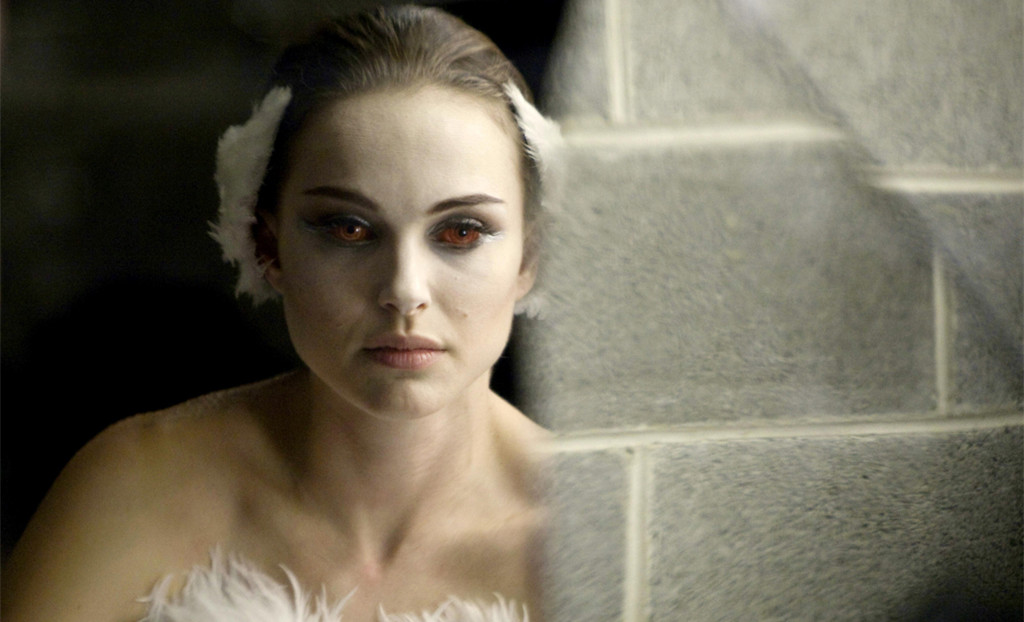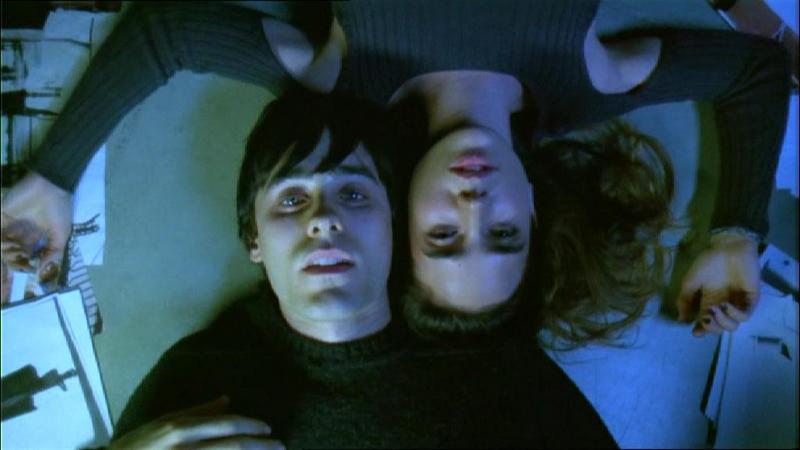3. Black Swan

Black Swan was Aronofsky’s first awards-season smash. While The Wrestler and Requiem for a Dream picked up some acting awards, Black Swan was Aronofsky’s first film to pick up nominations for Best Picture and Best Director at the Oscar’s. It also did exceptionally well at the Golden Globes and BAFTAs. What was it that made Black Swan such a critical darling? Aside from Portman’s haunting performance, the movie was also a visually engrossing treat that crawled under your skin and stayed there.
Honestly, Black Swan isn’t remotely close to the typical Oscar bait. It’s still very much an Aronofsky film. It’s the same type of dark, beautiful, thought-provoking film that made him famous years ago. It’s the type of film that should have been more polarizing. Luckily, this talented director sprinkles in something for everyone. The people put off by the creepy imagery may be able to dig the creative symbolism instead. The film somehow manages to hit all the right marks in order to make everyone happy.
Aronofsky also managed to pull an Aronofsky by making a not-so-interesting subject mesmerizing. This is a movie that can’t be described with a quick plot summary. It’s not just a movie about Natalie Portman learning how to dance. It’s an introspective look at a damaged woman seeking to achieve perfection. Like Pi and The Wrestler, the importance of perfection constantly lingers in the background. If it’s not directly given to the audience, this theme is at least implied throughout the entire runtime.
People have likely heard enough about Portman’s performance, so be aware that although there won’t be countless paragraphs dedicated to praising her, she is still exemplary. The same can be said about the costume design, art direction, and cinematography. In fact, almost every aspect of Black Swan is top notch. If at first it seems like a pretentious bore, give it time. It’ll surprise you.
2. The Wrestler

For those looking for a more grounded movie from Aronofsky, The Wrestler fits the bill. It’s a more straightforward film to be sure, but it’s still just as thought provoking as some of his more experimental flicks. At first glance, a movie like The Wrestler seems risky. Fighting movies are a dime a dozen.
Every year, it seems like countless big-name directors attempt to take on the genre only to fall slightly short. Bleed for This, Southpaw, and Hands of Stone are recent examples of sports dramas that have good intentions, but fall flat due to generic scripts. So how does The Wrestler manage to stand out in such a crowded field?
Upon its release, Rourke was no doubt the most talked about aspect. His comeback performance earned him countless award nominations. While he fell just short of the Oscar, there’s been much debate on whether or not Sean Penn deserved to take it home on Oscar night. Truthfully, Rourke gives the best performance of his career. His sensitive portrayal of the title character is unforgettable.
The movie is more than just a vehicle for Rourke. The Wrestler, like many of Aronofsky’s movies, deals with the fear of disappointment and the search for perfection. Randy Robinson is on a quest to relive his glory days, and it’s shocking to see how far he’ll go to achieve his goal. His cinematic journey is equal parts harrowing and inspiring.
With The Wrestler, Aronofsky shows that he’s a flexible filmmaker. His adoration of the surreal is pushed aside this time around. His more conventional approach to filmmaking only proves that he can be exciting without being strange. The Wrestler is an emotional gut punch that sticks with the viewer long after the initial viewing.
1. Requiem for a Dream

Requiem for a Dream is, without a doubt, Aronofsky’s most well known film. It may be surprising to learn that despite this, it’s not necessarily his most critically acclaimed piece of work. Both The Wrestler and Black Swan did far better with the critics.
Some critics claimed that Requiem for a Dream valued style over substance, while others found the cynical tone to be off-putting. The movie is definitely stylish, but the visuals rarely distract from Aronofsky’s message. The darker tone is occasionally hard to sit through, but it seems necessary in contrast to the more light-hearted drug movies that had become so popular during this time.
Requiem for a Dream is no Trainspotting. That is to say, it takes on the subject of substance abuse in a completely different way. Trainspotting was frequently accused of glorifying drug use thanks to its more comedic tone. Requiem for a Dream uses drug abuse to tell something resembling a horror story.
Aronofsky uses the anthology format to show addiction from multiple angles. None of these angles resemble the the kind of hilarious roller coaster ride found in Trainspotting. Each of the overlapping stories are bleak peaks into the lives of addicts. Each new frame is just as heartbreaking as the last. To put it bluntly, Requiem for a Dream will ruin you.
Aronofsky keeps things classy though. The movie depicts addiction in a way that’s hard to stomach, but he never paints the protagonists as villains. Instead, he shows the audience that these people are human. He simultaneously warns people about drug use while also making a statement that in many ways, the people are helpless. They continue to make poor decisions not because they think it’s the right thing to do but because they don’t believe there’s another option.
In other words, Aronofsky’s breakthrough film isn’t afraid to make a statement. This bold look into addiction is packed with symbolism and strong motifs, but that’s not all it has going for it. Claims have been made that the movie puts a strong emphasis on style, and while some think the rapid editing and vibrant colors detract from the message, others (including the author of this article) welcome it with open arms.
The way the movie is edited is almost anxiety-inducing. Shots rarely last more than a couple seconds, and they all come together to form a frenetic experience comparable to a bad trip. There are times when Requiem for a Dream will make you feel like you’re on drugs.
It’s well-written, it’s unique, and it makes you believe Marlon Wayans is a capable dramatic actor. What isn’t to love? The movie may come across as disturbing, but the most uncomfortable moments only exist to further emphasize the bigger picture. Minor complaints aside, this is Aronofsky’s magnum opus.
Author Bio: Justin is a paraprofessional teaching assistant and full-time film enthusiast with a degree in English. When he’s not writing about films, he’s probably watching them in his spare time.